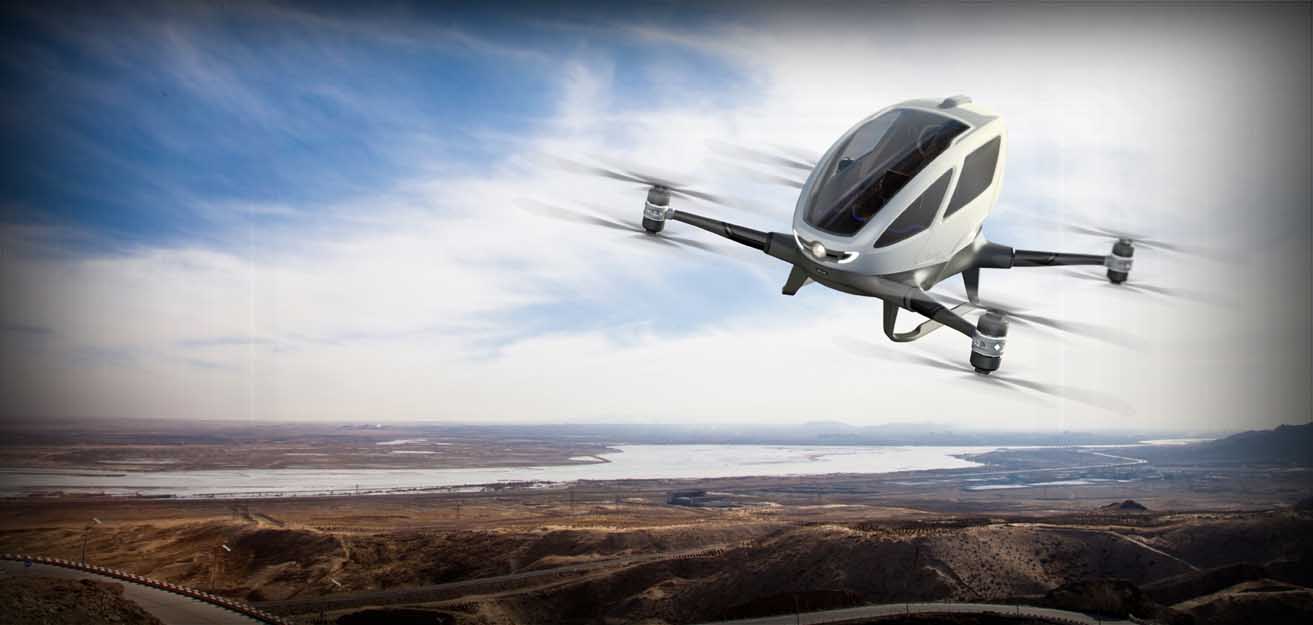


One of the most talked about products at the 2016 Consumer Electronics Shows in Las Vegas left observers wondering whether to call it a passenger drone or a self-flying helicopter.

Made by Chinese UAV manufacturer Ehang, the Ehang 184 (numbered “184” for 1 passenger, eight rotors, and four wings) is a 1.5-meter, 200kg, all-electric drone that can carry a 100kg person for 23 minutes at speeds of 100 kph. As a fully automated UAV with redundant fly-by-wire and networked, encrypted sensors, Ehang 184 allows non-pilots to fly in small, personal aircraft without having to go through extensive pilot training or the high cost of a private jet/helicopter. Rather, they can enjoy their flight in the comfort of an air conditioned, F-1 style racing cabin that even has 4G Internet. The manufacturer claims its sensors and computer are smart enough to allow the 184 to fly both in empty rural spaces and reasonably crowded urban areas.

If it gains widespread acceptance, the Ehang 184 and its successors would democratize private flight. It’s like Uber meets the Google Car, but in the air. But like these examples, the technology may also may have security applications.

At first glance, the Ehang 184’s short range and likely low flight altitude would seem to preclude its use as a military transport. However, its high level of flight automation and redundant systems can be militarized and scaled to other systems. Ehang has developed flight control software that not only autonomously develops a flight plan and adjusts it according to data from its many sensors, but the flight control system can also refuse to take off in certain conditions (such as thunderstorms), as well as diagnose and remedy damage (such as birdstrikes), and includes emergency landing protocols.

To look at the Ehang 184’s possible military use, the U.S. Marines’ testing of the K-Max robotic helicopter in Afghanistan and at sea is a likely guide. Just like the K-Max, the application of Ehang 184 technology to Chinese unmanned systems would provide autonomous tactical delivery of supplies (and maybe even people) to rugged locations where it’s too dangerous for manned helicopters, or where runways are unavailable. Conversely, the Ehang could provide on-demand evacuation of lone special force operators, VIPs, casualties, prisoners and captured materials. Proliferating widespread VTOL airlift capabilities to Chinese forces would aid logistics for counter-insurgency operations and peacekeeping, and give third dimension maneuver capabilities to Chinese squads operating in urban environments.
Just like in so many other technologies, including the helicopter and drones that it takes inspiration from, the Ehang 184 could become the forerunner to highly autonomous robotic systems to use at work, play, and war.
You may also be interested in:
Amphibious Drone Takes First Flight
China’s New Trio of Urban Combat Robots
